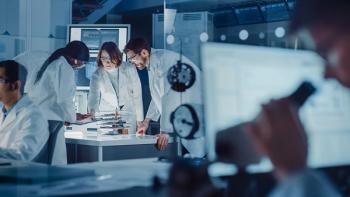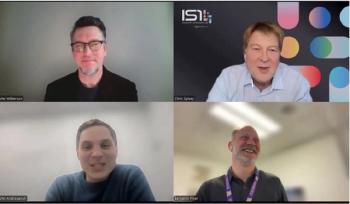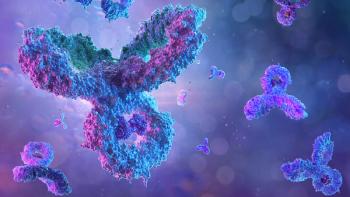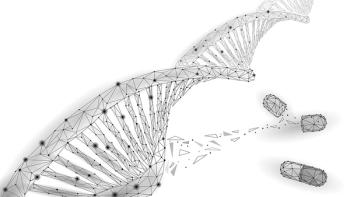
Strategic Shifts for Speed, Resilience, and Long-Term Sustainability in Biomanufacturing
Key Takeaways
- Overcoming structural and regulatory hurdles is crucial for achieving speed and sustainability in biomanufacturing, with mobile plant designs enhancing flexibility.
- Digital integration and AI are transforming biomanufacturing, optimizing processes, and enabling real-time visibility and prediction.
During the panel discussion "Redefining Biomanufacturing for a Sustainable Future" at
The panelists include Gaston Salinas, CEO and co-founder of Botanical Solution Inc; Yannic Werner, EMEA Manager of Pharmaceuticals and Microbiological Quality Control at FUJIFILM; Stefan Schlatter, head of Manufacturing Science and Technology Drug Substance Biopharmaceuticals at Boehringer Ingelheim Biopharmaceuticals; and Christian Houborg, general manager and SVP, Denmark at FUJIFILM.
What key barriers impede speed and sustainability in biomanufacturing?
The panelists identify that achieving both speed and continuity requires overcoming structural and regulatory hurdles while prioritizing flexibility. For CMOs, a crucial element is establishing "mobile plant designs with technologies that can accommodate different process formats and molecule formats." This approach, coupled with strong expertise, enables successful and fast transfers to bring customer products to market quickly. Similarly, some large CDMOs are striving to establish "identity complaints" of sites across regions, allowing clients to secure a second supply chain without the risk associated with a traditional technology transfer project.
However, for smaller organizations, the challenge often revolves around coordination and regulatory navigation. Salinas notes that operational issues must be tackled by starting with comprehensive CMC action plans, especially when coordinating multiple third-party manufacturing sites. Furthermore, the limitation is not always a "lack of innovation. It comes down to, sometimes, the regulatory framework that you need to address, and how you're able to navigate that sort of reality," he says. From a quality control (QC) perspective, time is paramount, making it essential to provide innovations that "automate us and better technologies" to optimize quality processes and ensure timely product release.
How are digitalization and AI transforming biomanufacturing processes?
The panel recognizes digital integration as a vital platform for internal site management and external collaboration with partners. Clients are actively pushing CDMOs toward highly digital and interconnected systems, they note. Houborg cites that platform integration—such as linked systems—creates an "openness for collaboration, but also a platform for collaboration that is extremely important in terms of powerful innovation benefits." He sees AI as an asset, particularly in utilizing gathered knowledge to build improved quality systems.
For R&D, AI plays a crucial role in validating proof of concepts and speeding up activities, such as improving raw material quality, the discussion continued. Within manufacturing, digital technologies are employed early on, for example, using computational fluid dynamics (CFD) to support lab studies. Schlatter highlights the potential future goal of using CFD to "omit lab studies by performing, for example, times from just the CFD and have that pocket accepted by regulators." Critically, all data gathered from analytics and process controls are being channeled into a central data hub, allowing customers to see the process in real time. This focus on prediction and real-time visibility is growing, with the industry moving toward utilizing development and analytical data earlier, rather than relying solely on final analytics. The future approach for QC will be to observe the entire process and predict potential issues to reduce the need for final quality control.
What does sustainability entail beyond environmental metrics?
The panelists defined sustainability across multiple dimensions, including environmental impact, geopolitical resilience, and patient access. Environmentally, sustainability necessitates moving away from traditional raw materials, as exemplified by Botanical Solutions growing and purifying their materials internally to make vaccines more sustainable.
For CDMOs, sustainability is inextricably linked to supply chain resilience, especially after the pandemic. Houborg notes that "the whole industry is under pressure, so we need to design our supply chains ideally to meet the future and whatever will happen." This involves having strong sites in multiple geopolitical regions (e.g., Europe and the US). Furthermore, environmental responsibility is key; FUJIFILM is dedicated to making sites "as free as possible" and ensuring medicine supply is not "on account of nature," with some sites having targeted “green” status before 2024.
Sustainability is also achieved through end-to-end strategies, including dual sourcing and implementing backup strategies for every critical process to prevent losing an entire batch, according to the panel. Schlatter points out that their site operates its own wastewater treatment plant to purify and reuse water, avoiding waste. From a QC standpoint, sustainability includes providing rapid technologies to manage the short shelf life of new product categories (like cell and gene therapies), ensuring timely release and quality assurance.
How is the relationship between sponsors and CDMOs evolving?
The industry is undergoing a significant transformation, shifting from a traditional transactional relationship to one of strategic collaboration and partnership. For smaller companies, strategic partnership is essential for generating credibility and allocating resources effectively. Salinas states that this requires mutual commitment because sponsors "need some level of commitment from the CMO to somehow reserve some manufacturing capabilities that you need to be available if you hit those critical milestones."
The interaction is increasingly defined by co-creation and a push for innovation from sponsors, particularly regarding green initiatives, says Salinas. The CDMO industry is moving beyond being merely a "cost, flexibility game" to becoming a source of "getting access to knowledge and just to acknowledge an innovation."
This shift is amplified by digital transparency, which Houborg describes as a "cultural revolution." With real-time data platforms, customers can access bioreactor information instantly and "will potentially know things before the site." This new level of openness requires organizations to focus on "people first" and building cohesive teams across organizational boundaries. Schlatter echoed this, noting that real-time data has enabled faster decision making during critical times, facilitating true collaboration with customers.
What organizational strategies are required to prepare the future workforce?
To manage increasing digitalization and complex partnerships, organizations must fundamentally restructure their internal approaches and staffing strategies. A key focus is on breaking down organizational silos, which Werner views as a major issue that hinders open discussions and collaboration.
Houborg emphasizes that value is created across organizational boundaries, urging CDMOs to view collaboration with partners not as competition, but as a way to leverage collective learning. The goal is to make the partner view the CMO site as "a place where you can come with all your people and… we will help you move forward."
Schlatter highlights that experienced staff are the "biggest asset" and that "employability is a big topic." To ensure staff remain viable over time, companies must "cross skill our staff, enabling them to work in different areas." The general consensus is that while the industry needs digitally skilled workers, there must be a balance between acquiring new digital skills and retaining the critical process knowledge held by experienced operators. Salinas notes that cultural change requires leaders to spend significant time promoting internal flexibility and recognizing that "you don't know what you don’t know," necessitating the recruitment of external expertise.
What regulatory changes are expected or desired by 2030?
The panelists expressed hope for a regulatory environment that adapts to innovation and supports rapid delivery to patients. While the accelerated approval seen during the pandemic demonstrated regulatory agility, there are now concerns that increased political scrutiny may lead to more stringent requirements.
Houborg hopes that regulators will loosen the burden for partners by accepting product moves across sites based on the certificate of variance, provided the CDMO sites are identical. Werner stresses the importance of transparency and better exchange with regulators so that they may support the implementation of new, necessary technologies. The overarching regulatory goal should remain patient-focused: making processes "as loose as possible, as good as possible, as fast as possible." Schlatter adds that the industry has an opportunity to work with regulators to shape, rather than simply be dictated by, regulations, particularly by relying more on in silico data and comparability studies to accelerate processes.
Newsletter
Stay at the forefront of biopharmaceutical innovation—subscribe to BioPharm International for expert insights on drug development, manufacturing, compliance, and more.





